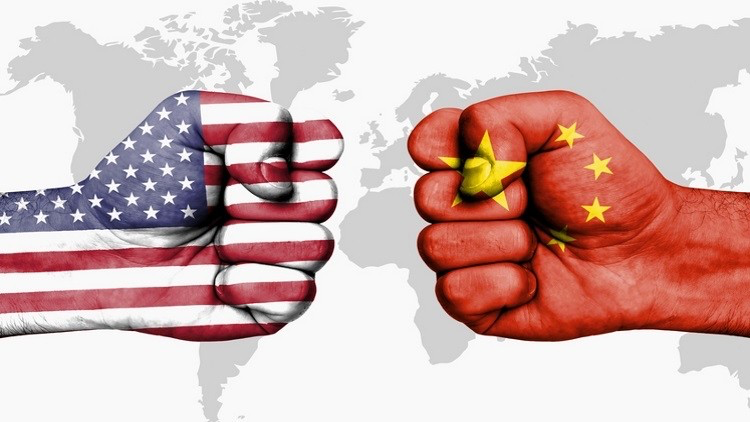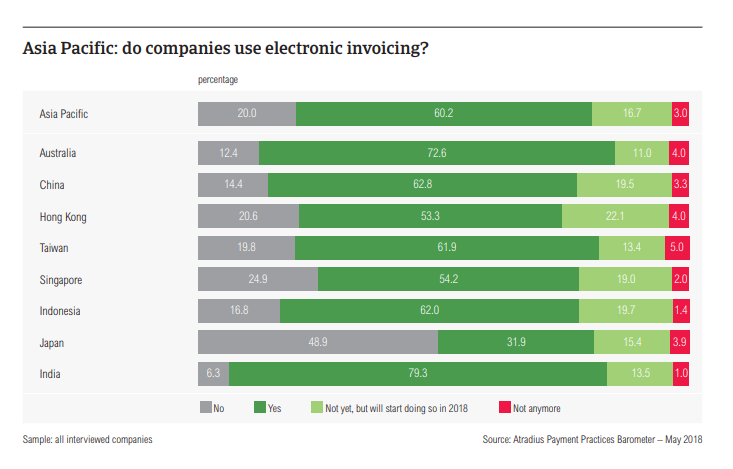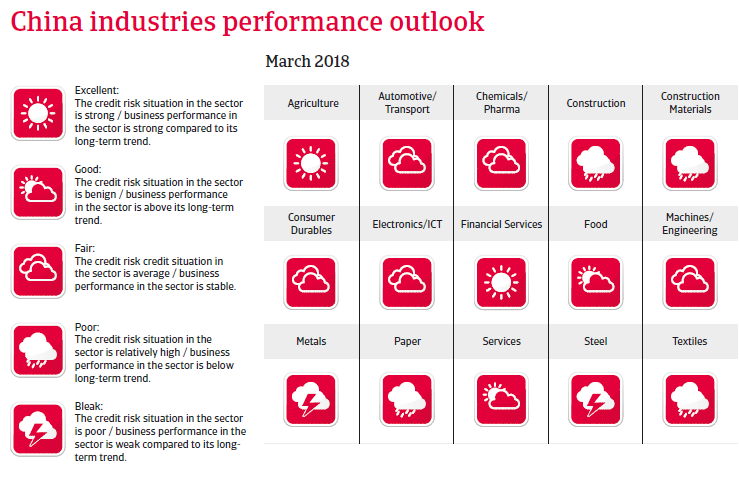China: “World Assembly Workshop” Not as Simple as It Seems
Do you know how much an analytical report costs with a forecast of IoT development in China until 2021? $ 4500 We are sure that many people of business and government in some countries of the world would give much more to find out what will happen to the Middle Kingdom in 5-10 years. In recent years, China has been changing its image more and more intensively: it is moving from the main assembly shop of the whole world to the stage of digital transformation and digital economy. And, contrary to expectations, this is not a digital transformation, about which nominally idle talk at adult conferences, but a real, living process. This time we will tell you why China is not only gadgets and the great Chinese firewall. Behind a firewall, wonderful things are happening.
According to IDC forecasts, the average annual growth rate of the China Information and Communication Technology Market in China (CAGR) is 8.6% from 2016 to 2021. And this rate exceeds the forecasts that existed earlier - the experts are forced to redesign their assumptions, because the country's economy has turned out to be very dynamic. China’s digital economy is expected to reach $ 8.5 trillion by 2021, which is about 55% of GDP. Now China is activelypromoting the transfer of enterprises to new technologies. In addition, the business has already managed to discover big data for itself, to understand their practical advantages and seeks to target all existing business models to data. However, this is not an easy and quick process.
However, such growth rates do not mean that China’s technological sphere exists in a vacuum and is not experiencing difficulties. Like other areas, this sector is fully aware of all geopolitical surprises, internal greetings and other joys of a market economy within a large, developing and at the same time communist country.
A striking example of the confrontation is the recent situation with ZTE and Huawei, whose sales in the networks of operators were banned in May 2018 after it was time to shake a spy scandal from 2016. American companies were banned until 2025 to supply components ZTE. This affected all participants in the process, and China threatened to abandon the importation of the iPhone. As a result, a compromise solution was found: ZTE paid a large fine, changed the board of directors and returned to the North American market. Finally, the sanctions were lifted. Huawei is still not in favor in the United States, but did not lose inspiration and literally at the end of this October, he notably donated Donald Trump, inviting him to buy a Huawei smartphone in exchange for an iPhone, which the Chinese and Russian hackers are listening to. They promised to get it if necessary.


Source . One of the solutions to the problem of overdue payments is electronic invoicing (invoicing and payment systems).

Source . Electronic bills really had an effect on the speed of payment.
But not everything is so gloomy near. There are some weighty positive points.

Source . Excellent infographics, which describes the state of affairs in different industries. As you can see, ICT is not cloudless, but quite comfortable for yourself: the average degree of risk, the efficiency of entrepreneurial activity is average.
China is the second largest market for information and communication technologies, which, according to IDC expert group estimates, will reach $ 844 billion. Naturally, China is a serious competitor for other tehnomonstrov, in particular the United States and South Korea.
The combination of these factors makes China a weighty competitor in the international market and, I think, further competition will be only more. However, political and country risk still scares investors.
Measures of state support for ICT of China, a strong position in the field of consumer economics and policies aimed at the return of scientists back to China, will obviously bear fruit. Chinese brands will continue to conquer the world and, obviously, will look for compromises in order to enter the lucrative US market. Progress will continue in the field of "Smart City", which will certainly become part of the best practices in this field for all cities in the world.
The only thing that can hinder development now is corruption, difficulties in social policy and problems with the population. However, there are progress in this direction: the state reduces utility tariffs, creates conditions for receiving education at all levels, and seeks ways to solve housing problems.
One thing is clear for sure - China today looks confident, feels confident, and, still remaining the “main assembly hall,” is already capable of independent progressive development. It will be an interesting game.
Our discounts to 11.11 - the most ambitious Chinese sale, which in its power and reach surpassed Black Friday.
Gearbest warns: New Year is not far off, it's time to order gifts for relatives, friends, and colleagues. Still have time to come.

What's up, China's ICT sector?
According to IDC forecasts, the average annual growth rate of the China Information and Communication Technology Market in China (CAGR) is 8.6% from 2016 to 2021. And this rate exceeds the forecasts that existed earlier - the experts are forced to redesign their assumptions, because the country's economy has turned out to be very dynamic. China’s digital economy is expected to reach $ 8.5 trillion by 2021, which is about 55% of GDP. Now China is actively
Wait, stay, I know that soon 11.11 and you probably have a lot of discounts on gadgets and accessories, prick already!
- Russian-language page sales gadgets : smartphones, tablets, speakers, 3D-printers, etc. - all discounts here
- Guide to the wilds of our sale 11.11 - many different offers for all kinds of ICT products, everything as you like
- All sorts of different coupons - to stock up and buy even cheaper
- Fast delivery of technical goods
- Complex sets on sale
- 3 any goods for $ 9.99
- Первые 2 000 покупателей, которые сделают заказ в период с 10 по 14 ноября на сумму свыше 50 долларов, автоматически получат скидку 5 долларов. Стоит отметить, что акция работает только при оплате через PayPal.
However, such growth rates do not mean that China’s technological sphere exists in a vacuum and is not experiencing difficulties. Like other areas, this sector is fully aware of all geopolitical surprises, internal greetings and other joys of a market economy within a large, developing and at the same time communist country.
- Now the market is a little reeling from the sanctions and special tariffs from the US - it is unclear what position the major international customers and partners of China will take. It is no coincidence that we put this factor in the first place - at this particular moment in time, it carries a serious load due to the dependence of China’s industry on the United States. However, over time, its influence will subside, since China is moving away from a "purely gadget history." But now 79% of companies expect a negative impact.
A striking example of the confrontation is the recent situation with ZTE and Huawei, whose sales in the networks of operators were banned in May 2018 after it was time to shake a spy scandal from 2016. American companies were banned until 2025 to supply components ZTE. This affected all participants in the process, and China threatened to abandon the importation of the iPhone. As a result, a compromise solution was found: ZTE paid a large fine, changed the board of directors and returned to the North American market. Finally, the sanctions were lifted. Huawei is still not in favor in the United States, but did not lose inspiration and literally at the end of this October, he notably donated Donald Trump, inviting him to buy a Huawei smartphone in exchange for an iPhone, which the Chinese and Russian hackers are listening to. They promised to get it if necessary.

- The countries of the world with developed capital are taking measures against the admission of Chinese investors to national markets - such deterrence impedes both technology and capital flows in the Middle Kingdom itself.
- At some key "gadget" markets, a situation of overheating and huge competition has arisen: this applies to batteries, boards, screens. In such conditions, manufacturers begin to dump the price, which is not the best way affects the profitability of players.
- Despite the huge consumer market, domestic demand for ICT goods is steadily declining which year in a row: on the one hand, the market is satiated with affordable devices, on the other - a high percentage of low-income population does not want to frequently change gadgets or buy more expensive ones. Additional problems with demand arose in 2018, when manufacturers were forced to raise prices even more (due to problems with components for production). Ways to find something new is not expected yet.
- Highly profitable smartphone market, of course, is not bent, but rather stagnant. No new ideas, breakthrough models, some kind of supernova software or concept devices. Horses run in a circle: productivity increases, two cameras are inserted, everything that could be thinner, became thinner. But these are all the same smartphones with the same design and feature set. Here either develop themselves, or wait for someone to come up. Or do not bet exclusively on smartphones.
- China remains alive (and will live long) censorship and secrecy on the Internet. Despite the fact that the country has become the birthplace of a huge number of Internet companies (and we are terribly proud that our Gearbest is not the last among them), problems with the availability of information and information security persist.
- Not everything is clear in the financial sphere either: the activities of some companies are not sufficiently transparent: for example, companies may not be obviously connected and the liquidation of one may lead to liquidity problems for the entire holding. Again, there is a problem with receivables - there are always delays in payments. This problem should not seem far-fetched - disrupted supplies and defaults lead to a crisis in entire chains of relationships. Plus, you shouldn’t exclude the facts of fraud on the part of companies wishing to catch their truck of fish in muddy water.

Source . One of the solutions to the problem of overdue payments is electronic invoicing (invoicing and payment systems).

Source . Electronic bills really had an effect on the speed of payment.
But not everything is so gloomy near. There are some weighty positive points.
- From 2016 to 2020, there is another five-year plan, the root idea of which is to support the production of domestic electronics and semiconductors in particular.
- The state supports high-tech projects.
- The domestic market, despite the stagnation, works and will grow. Simply put, new inventions and goods will always be sold to someone: conditionally, gorged on smartphones, here you have sensors for a smart home, IoT for sports and health, home robots, and so on.
- The volume of intellectual property continues to grow, and patent law is developing.
- In the Middle Kingdom, cybersecurity systems are being developed, including those designed to fight external attacks.

Source . Excellent infographics, which describes the state of affairs in different industries. As you can see, ICT is not cloudless, but quite comfortable for yourself: the average degree of risk, the efficiency of entrepreneurial activity is average.
10 ICT trends of China to be envied
China is the second largest market for information and communication technologies, which, according to IDC expert group estimates, will reach $ 844 billion. Naturally, China is a serious competitor for other tehnomonstrov, in particular the United States and South Korea.
- China is one of the world leaders in the production of semiconductors and equipment for their production. Despite international problems and falling demand for semiconductors, the industry is not stagnating - the state is pouring huge amounts of money into it.
- The introduction of information technology in the traditional industries. The Internet of Things penetrates agriculture, communal sphere, transport.
- Development of security systems as part of the program to protect national security objects. On July 1, 2017, the first cybersecurity law in the country’s history was adopted, which included regulation of ICT protection and surveillance measures.
- China is an active participant in the development of international standards 5G, and at the moment many Chinese companies are conducting tests and surveys of networks of the fifth generation.
- China does not lag behind in the field of IoT%: new computational platforms are already functioning, which allow using IoT to the full. An important sub-sector of this sphere is IoV (internet of vehicle), an intelligent transport management system.
- While AR and VR around the world are trying to conquer the gaming industry, China (not without the participation of Russian startups and system integrators) is actively using these technologies in the retail industry to create virtual windows and fitting rooms.
- Chinese companies are striving to become innovators in marketing and sales. They make an impressive online trading infrastructure and try to bend under their changing world. What only cost to think up to make 11.11 - Chinese student holiday Bachelor's Day - an international day of shopping, in which all buyers smash shops with discounts. Gearbest also did not stand aside - come in, discounts - light . Of course, we do not pretend to innovation, but we also invented something: we have new rules for working with a deposit for pre-orders , and we like them ourselves.
- China needs cloud computing, and that's the problem. Many US cloud service providers rush into the Chinese market, but face many restrictive measures and tight controls. Therefore, there are two ways out: Chinese providers form their market, and the US isolates Chinese segments from their global networks.
- Perhaps the most interesting trend in China that you might envy is Smart City - the concept of using information technology to solve any urban problems (from environmental design to higher education). Technology Google, Amazon, social networks, Taobao and WeChat became the basis of the Internet of things, consisting of objects of the physical world, hung with sensors, cameras, sensors, control systems and operation. And these are not just some kind of toys or tourist things, but the real infrastructure that ensures the functioning of emergency services, utilities, transport, and gathers information. By the way, urbanization is part of the five-year strategy. In addition, private foreign capital is actively attracted to this area.
- China does not look like a developing country, in whose markets international corporations compete exclusively with each other. Chinese companies have joined the struggle in the domestic market and are actively winning shares in the markets of the world (in particular, Huawei, ZTE, Xiaomi).
The combination of these factors makes China a weighty competitor in the international market and, I think, further competition will be only more. However, political and country risk still scares investors.
What's next?
Measures of state support for ICT of China, a strong position in the field of consumer economics and policies aimed at the return of scientists back to China, will obviously bear fruit. Chinese brands will continue to conquer the world and, obviously, will look for compromises in order to enter the lucrative US market. Progress will continue in the field of "Smart City", which will certainly become part of the best practices in this field for all cities in the world.
The only thing that can hinder development now is corruption, difficulties in social policy and problems with the population. However, there are progress in this direction: the state reduces utility tariffs, creates conditions for receiving education at all levels, and seeks ways to solve housing problems.
One thing is clear for sure - China today looks confident, feels confident, and, still remaining the “main assembly hall,” is already capable of independent progressive development. It will be an interesting game.
Our discounts to 11.11 - the most ambitious Chinese sale, which in its power and reach surpassed Black Friday.
- Russian-language page sales gadgets : smartphones, tablets, speakers, 3D-printers, etc. - all discounts here
- Guide to the wilds of our sale 11.11 - many different offers for all kinds of ICT products, everything as you like
- Millions of coupons - to stock up and buy even cheaper
- Fast delivery of technical goods
- Complex sets on sale
- 3 any goods for $ 9.99
- And we remind: the first 2,000 customers who make an order from November 10 to 14 for an amount exceeding $ 50 will automatically receive a discount of $ 5. It is worth noting that the action only works if you pay via PayPal.
Gearbest warns: New Year is not far off, it's time to order gifts for relatives, friends, and colleagues. Still have time to come.
